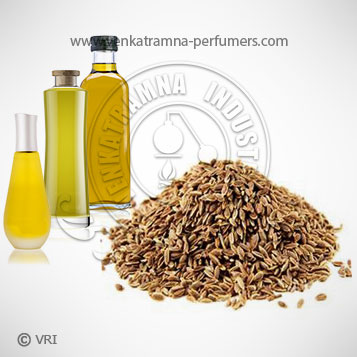
| Botanical Name | Cuminum Cyminum |
| Common Name | Fitch essential oil, Kalonji essential oil, Onion Seed essential oil, Black Caraway essential oil, Hei zhong cao essential oil, Fennel Flower essential oil, Black Sesame Seed essential oil, Black Seed Essential Oil |
| Country of Origin | India,Egypt |
| Solubility | Insoluble in water, soluble in alcohol and oils |
| Specific Gravity | 0.91 |
| Optical Rotation | 6.1 |
| Refrective Index | 1.5 |
| PlantPart | Seed |
| Bland With | Angelica, caraway and chamomile. |
| CAS No | 8014-13-9 |
| Flash Point | 127° F |
| Extraction Method | Steam Distilled |
Spices are an important bio-nutrients for both food ingredients and nutritional supplements. From ancient times, spices have been used as food additives to enhance the taste and be flavor of food. Apart from these uses, spices also have numerous medicinal properties and used to treat several disorders that form an important part of the Ayurvedic Pharmacopoeia (Indian System of Medicine). Spices have increasingly larger role to play in Indian recipes as the bactericidal, bacteriostatic, fungistatic, antifertility, anti-helminthic and other medicinal properties and also believed to aid digestion. In the traditional Indian system of medicine, more than a few spices and herbs have hold and possess several medicinal properties such as antithrombotic, anti-atherosclerotic, hypolipidemic, anti-inflammatory, anti-aggregatory, eicosanoid inhibitor.1 Cumin is popular as culinary spice and used in folklore therapy because the presence of aromatic substances in the herb. Cumin comes under the category of traditional spice from middle ages. It was too much popular, because of its peppery flavor. During the middle ages in Europe, cumin became as an icon of love and fidelity and also some people wants to carry cumin in their pockets to give in wedding ceremonies. Cumin is a small hairy, brownish in color, boat shaped seed plant that have a spicy sweet aroma property and powerful slightly bitter and pungent flavor.
In use for over 4,000 years, Cumin was mainly used for its digestive properties and as a spice. The ancient Greeks and Romans used it much as we use black pepper. In the Holy Land, people used it to pay their debts and taxes with it. In the Middle Ages, feudal lords sometimes paid their serfs with Cumin for services rendered, before it fell out of favor with Europeans as a spice; at the same time, it began to grow in popularity in South America. Cumin seeds are obtained from the herb Cuminum cyminum, native from East Mediterranean to South Asia belonging to the family Apiaceae—a member of the parsley family. Cumin seeds are oblong and yellow–grey. Cumin seeds are liberally used in several cuisines of many different food cultures since ancient times, in both whole and ground forms. In India, cumin seeds have been used for thousands of years as a traditional ingredient of innumerable dishes including kormas and soups and also form an ingredient of several other spice blends. Besides food use, it has also many applications in traditional medicine. In the Ayurvedic system of medicine in India, cumin seeds have immense medicinal value, particularly for digestive disorders. They are used in chronic diarrhea and dyspepsia.
Color : Light Yellow To Yellow Brown Liquid with Cumin Fatty Sweaty Pepper odor,
Aroma : Spicy, penetrating scent.
Cuminic, cymene, dipentene, limonene, phellandrene and pinene, para-cymene, thymoquinone
Cumin has a distinctive strong flavour. Its warm aroma is due to its essential oil content. Its main constituent of aroma compounds are cuminaldehyde and cuminic alcohol. In traditional medicines, cumin was a major component of curry and chili powder that was used to flavor a variety of commercial food products. Cumin has also been crushed and mixed with foods such as fish and meat, and the seeds sprinkled on bread and cakes. The oil, derived by steam distillation, is used to flavor alcoholic beverages, desserts, and condiments. It is also used as a fragrant component of creams, lotions, and perfumes. . It is one of the popular spices regularly used as a flavoring agent. COMMON USAGE • Regulates digestion • Cures piles • Prevents diabetes • Treats asthma and bronchitis • Fights common cold • Increases lactation • Prevents anemia • Decreases cognitive disorders • Skin care • Boosts immunity • Prevents cancer